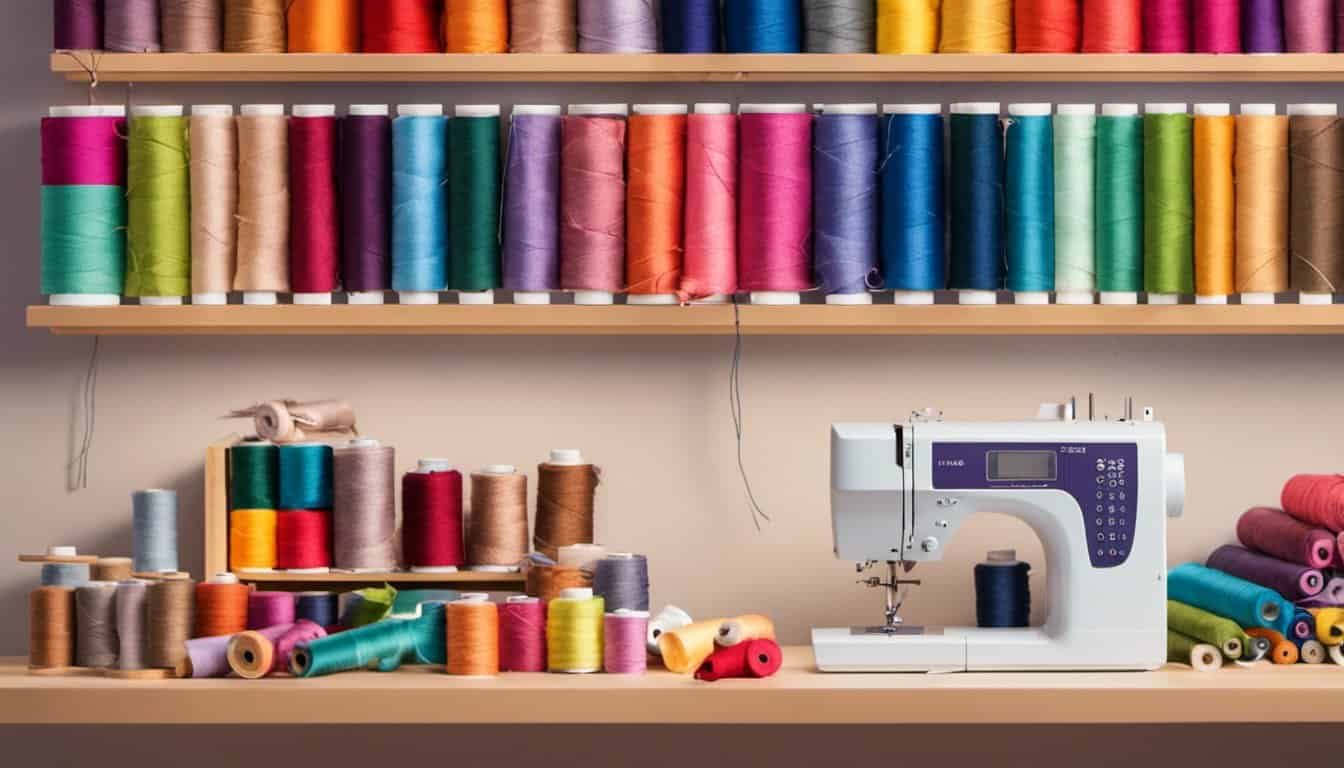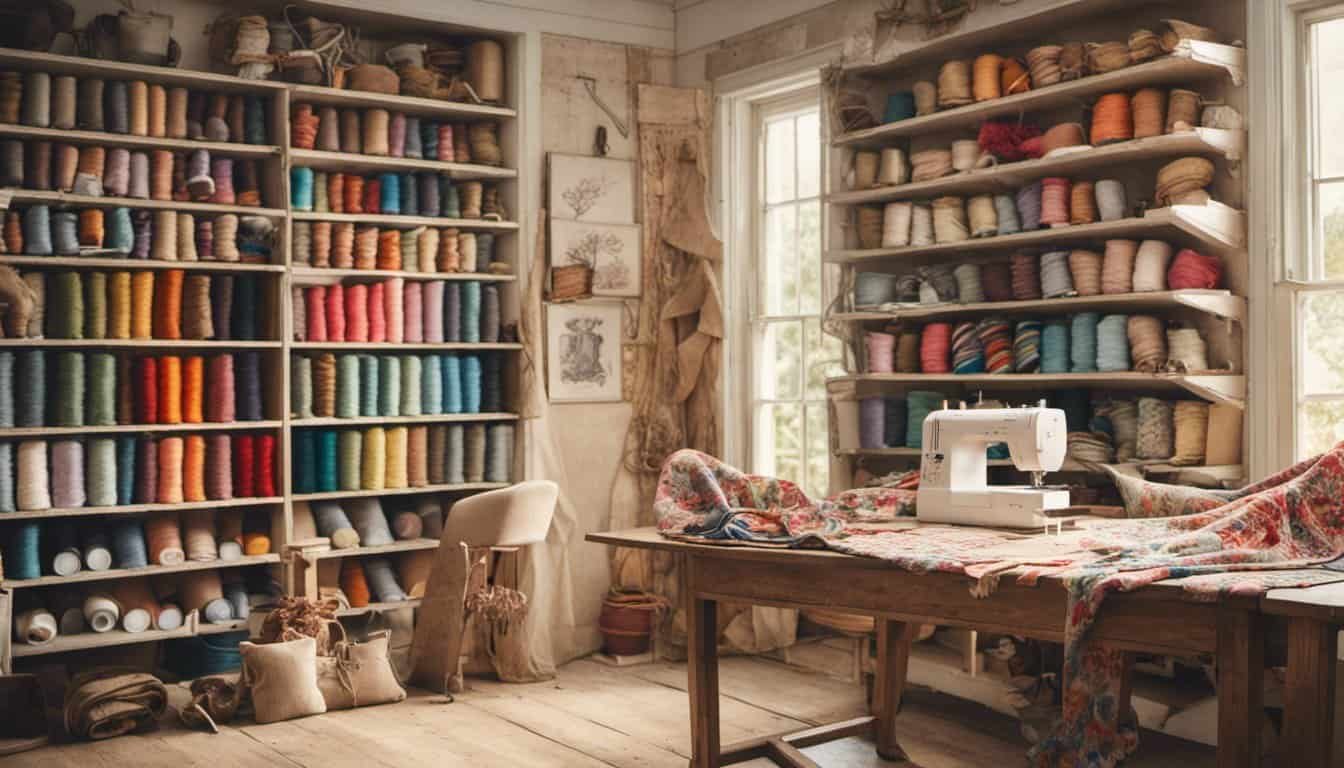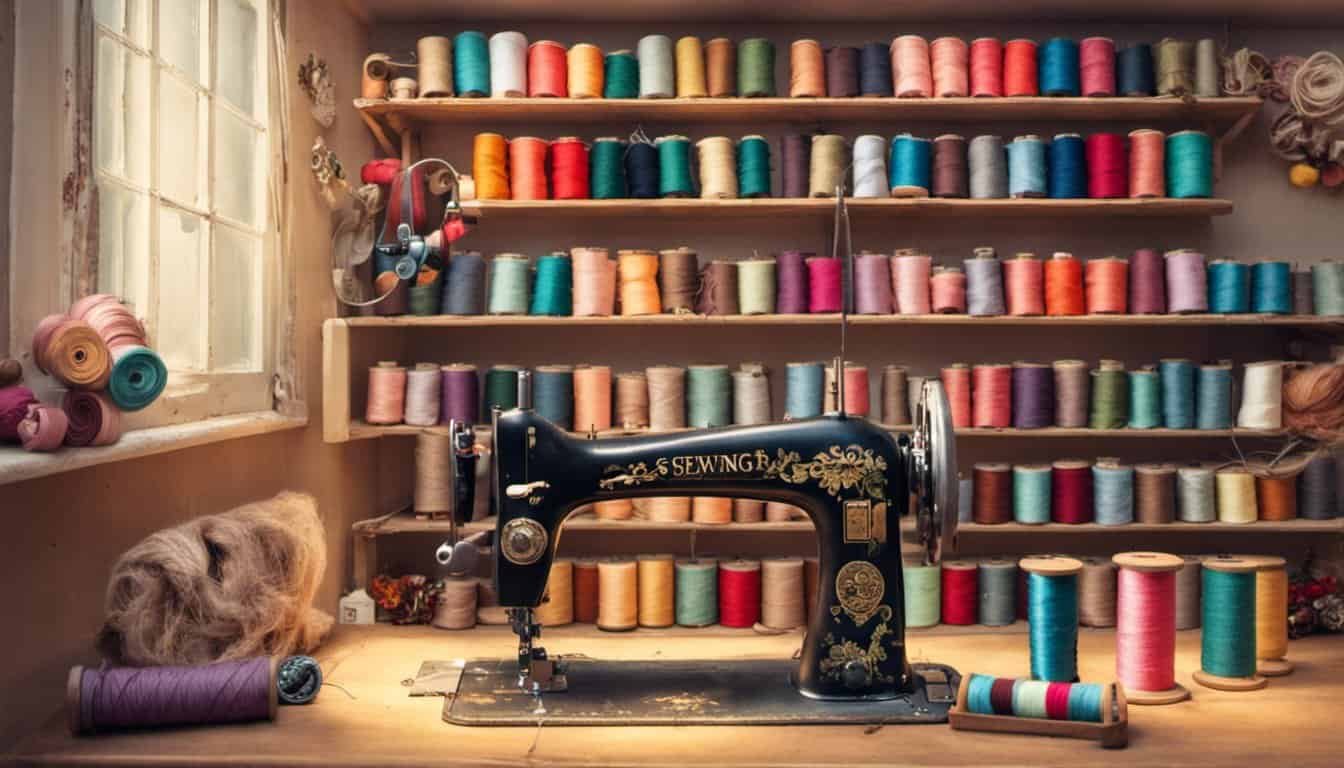Starting with a sewing machine can feel overwhelming, especially when things don’t stitch up as smoothly as you hoped. One common hiccup beginners face is getting the tension just right. I’ve been there, frustrated by uneven stitches and tangled threads, but adjusting the tension doesn’t have to be a mystery.
In this guide, I’ll walk you through the simple steps to balance your machine’s tension settings. Together, we’ll make sure your stitches are neat and your projects turn out beautifully. Let’s take the guesswork out of sewing machine tension and set you up for smooth, hassle-free stitching.
Understanding Sewing Machine Tension
Grasping sewing machine tension is crucial for achieving clean, even stitches. Proper tension ensures your projects turn out professional and free from common stitching issues.
What Is Thread Tension?
Thread tension regulates the tightness of the threads during sewing. It involves two main components: the upper thread tension and the bobbin tension. The upper tension controls the thread from the spool, while the bobbin tension manages the thread from the bobbin case. Balancing both tensions creates uniform stitches by securing the fabric layers together.
How Tension Affects Your Sewing
Incorrect tension can cause stitches to pucker, break, or appear uneven. High upper tension may lead to loose bobbin threads visible on the underside, while low upper tension can cause the upper threads to loop excessively. Adjusting tension settings adapts to different fabrics and thread types, ensuring each project has the appropriate stitch quality.
Tools You Need
Adjusting your sewing machine tension requires specific tools to ensure accurate settings:
- Sewing Machine: The core equipment for all adjustments.
- Extra Threads: Various colors help identify tension discrepancies.
- Scissors or Thread Snips: Essential for cutting and trimming threads cleanly.
- Seam Ripper: Removes incorrect stitches without damaging fabric.
- User Manual: Offers model-specific instructions for precise adjustments.
Having these tools on hand simplifies the tension adjustment process and enhances your sewing experience.
Step-by-Step Guide to Adjusting Tension
Here’s how I adjust the tension on my sewing machine:
Checking the Current Tension
I start by sewing a few stitches on a scrap fabric. I examine the stitches to spot any issues like loops or unevenness. Next, I observe the upper thread and bobbin thread on both sides of the fabric. If the upper thread is too tight or the bobbin thread is too loose, stitches become puckered. Conversely, a loose upper thread or a tight bobbin thread can cause thread breaks. Identifying these signs helps determine which tension needs adjustment.
Adjusting the Tension Screws
Most machines have tension dials or screws for both the upper thread and the bobbin. I locate the tension dial, usually near the spool pin. To increase the upper thread tension, I turn the dial to a higher number. To decrease it, I turn the dial lower. For machines with separate tension screws, I gently turn the screw clockwise to tighten the tension or counterclockwise to loosen it. I make small adjustments, typically a quarter turn at a time, to avoid overcomplicating the tension balance.
Testing Your Adjustments
After adjusting the tension, I sew another sample on the same fabric. I compare the new stitches to the previous ones. The stitches should appear even on both the top and bottom. If issues persist, I repeat the adjustment process, making minor changes each time. This iterative testing ensures the tension settings are just right for smooth, professional-looking stitches.
Common Tension Problems and Solutions
Uneven stitches and tangled threads often indicate tension issues. Identifying and resolving these problems ensures smooth sewing.
1. Thread Bunching on Top
Thread bunching occurs when excess thread gathers on the fabric’s top layer.
- Solution: Lower the upper thread tension incrementally. Test by sewing on scrap fabric until threads lie flat without loops.
2. Broken Threads
Threads break frequently due to excessive tension stress.

- Solution: Reduce the upper thread tension gradually. Ensure the thread is properly threaded through all guides and the tension discs.
3. Puckering Fabric
Puckering happens when stitches are too tight, causing fabric to gather.
- Solution: Decrease both upper and bobbin tension settings. Use a larger needle size if necessary and adjust stitch length for better fabric accommodation.
4. Loose Stitches
Loose stitches result from insufficient tension, leading to gaps in the seam.
- Solution: Increase the upper thread tension slightly. Verify that the bobbin is correctly inserted and the thread flows smoothly from the bobbin.
5. Looping Underneath the Fabric
Loops forming beneath the fabric indicate a bobbin tension issue.
- Solution: Tighten the bobbin tension incrementally. Ensure the bobbin is wound evenly and the thread path from the bobbin is clear.
6. Skipped Stitches
Skipped stitches can result from inconsistent tension or needle problems.
- Solution: Check and adjust both upper and bobbin tensions. Replace a dull or damaged needle and ensure it’s inserted correctly.
7. Thread Jam
A thread jam occurs when threads get caught inside the machine due to improper tension balance.
- Solution: Re-thread the machine, ensuring the thread follows the correct path. Adjust both upper and bobbin tensions to their default settings and make small adjustments as needed.
8. Uneven Stitch Length
« You Won’t Believe How Easy It Is: How to Read a Sewing Pattern Step-by-Step
Mastering French Seams for Delicate Fabrics: 7 Expert Tips You Need to Try Now »
Stitches of varying lengths disrupt the seam’s uniformity.
- Solution: Adjust the stitch length setting on your machine. Ensure both upper and bobbin tensions are balanced to maintain consistent stitch formation.
| Problem | Possible Cause | Solution |
|---|---|---|
| Thread Bunching on Top | High upper tension | Lower upper tension |
| Broken Threads | Excessive tension | Reduce upper tension |
| Puckering Fabric | Tight stitches | Decrease upper and bobbin tension |
| Loose Stitches | Low upper tension | Increase upper tension |
| Looping Underneath Fabric | Low bobbin tension | Tighten bobbin tension |
| Skipped Stitches | Unbalanced tension or needle issues | Adjust tensions and replace needle |
| Thread Jam | Improper threading or tension balance | Re-thread machine and reset tensions |
| Uneven Stitch Length | Imbalanced tension settings | Adjust stitch length and balance tensions |
By addressing these common tension problems with targeted solutions, you can achieve consistent, professional-quality stitches in your sewing projects.
Maintenance Tips for Optimal Tension
Maintaining your sewing machine ensures consistent tension and smooth operation. Here are essential tips to keep your machine in top shape:
Clean Your Machine Regularly
After each use, remove lint and thread scraps from the bobbin area and feed dogs. Use a small brush or vacuum attachment to clear debris from tight spots.
Oil Moving Parts
Refer to your user manual for specific oiling points. Apply sewing machine oil sparingly to designated areas to reduce friction and ensure smooth movement. Avoid over-oiling, which can attract dirt.

Inspect and Replace the Needle
Change the needle after every project or when it shows signs of wear. A bent or dull needle disrupts tension and causes stitching issues. Ensure the needle type matches your fabric.
Use High-Quality Threads
Select smooth, high-quality threads suitable for your fabric. Avoid tangled or low-quality threads that can imbalance tension. Store threads in a dust-free container to prevent contamination.
Adjust Tension Settings as Needed
Different fabrics require different tension settings. Test stitches on scrap fabric and tweak tension accordingly to achieve balanced stitches before starting your project.
Keep the Bobbin Area Clear
Ensure the bobbin is correctly wound and properly inserted. A misaligned bobbin leads to uneven tension and poor stitch quality. Follow your manual’s instructions for bobbin placement.
Regularly Inspect Machine Parts
Check belts, gears, and other components for signs of wear or damage. Replace any worn parts promptly to maintain optimal tension and machine performance.

Store Your Machine Properly
After sewing, cover your machine with a dust cover to protect it from dust and debris. Store it in a dry, safe location to prevent damage and ensure longevity.
Implementing these maintenance tips keeps your sewing machine functioning efficiently, providing consistent tension and professional-quality stitches.
Conclusion
Adjusting tension can feel overwhelming at first but it’s a skill that gets easier with time. I’ve found that taking small steps and making gradual changes really helps. Don’t be afraid to test your settings on scrap fabric until everything looks just right.
Remember that every project and fabric might need a different tension setting so stay patient and keep experimenting. Keeping your machine well-maintained also makes the process smoother and ensures consistent results.
Enjoy the journey of mastering your sewing machine. With a bit of practice you’ll achieve clean and professional-looking stitches that make your projects shine.

Happy sewing!

















